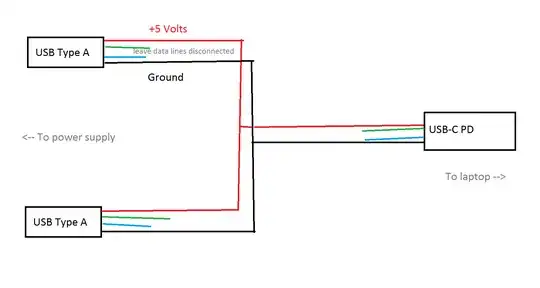Actually: No
The listing, as should be expected with a cheap power bank, clearly states a Total Maximum of 3.4 A. That's 2.4 A and 1 A.
Moreover the device does not specify whether both outputs are generated from the same boost converter internally, or if it's two different voltage boosters. Connecting two voltage sources in parallel with no regards to proper engineering means absolute unmitigated disaster, as nothing is 0% wrong. One source will be 5.05V the other 4.95V, it'll be more likely they compete or destroy each other than offer more current.
Apart from that the USB-C specification does NOT allow for more than 3A on a single 5V supply, it offers quick charging and advanced charging through devices that offer a special higher voltage on the same connector. With these higher voltages it's possible to get 30W through a cable without it being problematic.
30W is enough for the lower power types to charge, intel i3-5005, for example, should happily do so in most cases.
The reason they do not use 5V for that, is because trying to get 6A at 5V (required for 30W) through a thin USB cable is absolute nonsense, as at the other end it will be 4V or less, due to resistive losses.
So, yes, if you want to do that, you do need a boost converter. One of which will not cost a lot of hardware or space at all, this is unnecessary hyperbole. After all the power pack is already floating itself, and even if it weren't; 30W isn't a lot of power anyway (a hand full of cubic cm is enough to convert 30W isolated or not at 500kHz ~ 3MHz switched frequency operation). The main reason you don't want that is the power pack won't be able to supply anywhere near enough power to make that even remotely interesting, due to afore mentioned facts.
